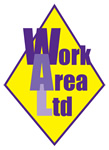 Employers have a legal responsibility to provide suitable seating for their staff. Inadequate seating results in strain and injury and in an extreme situation could lead to legal action being taken against you or your organisation.
Employers have a legal responsibility to provide suitable seating for their staff. Inadequate seating results in strain and injury and in an extreme situation could lead to legal action being taken against you or your organisation.
Even if you’re self-employed, you still need to consider your seating and whether it’s suitable for the work you do. Problems associated with poor seating can result in long term sickness and anyone who is self-employed knows if they don’t work, they don’t earn!
The starting point to determine if your seating is fit for purpose is to conduct a risk assessment. There are five basic steps in a seating risk assessment:
- Identify the hazards
Consider things like whether the chair’s height can be adjusted. If it has arms, do these get in the way and cause the user problems? Look at the chair’s relationship to the workstation. Is it too high, too low? Can the user get close enough to the desk or work bench?
- Who is at risk?
Each member of staff has different needs and people come in all shapes and sizes. For example, people are different heights and some will weigh more than others. What might be good for one person could pose a risk to another.
- Evaluate the risk
Consider if the user is at risk because their seating is unsuitable. If so, that risk must be addressed. This might include replacing unsuitable or unsafe chairs and providing footrests. If there is no risk, you don’t have to take any action.
- Keep records
If you have five employees or more, you have a legal obligation to record the findings of your risk assessment. But good record-keeping makes sense even if you have fewer members of staff.
- Regular reviews and risk assessments
People’s needs change so regular reviews are essential. For example, you might engage a new member of staff. While the seating might have met the previous user’s needs, it might not be suitable for the new employee. Other changes might include pregnancy or unrelated health problems which will affect the individual’s needs.
Assessing seating in a risk assessment
As we’ve already said, every person has different needs. The list below is not exhaustive, but intended to give you some useful pointers when carrying out a seating risk assessment:
- Ask the user if the chair is comfortable, even for long periods.
- Does the chair support the user’s lower back?
- Can the chair be adjusted and does the adjustment mechanism function properly?
- Are there armrests and if so do they provide the necessary support?
- Do armrests aid the user or do they get in the way?
- Can the user’s feet sit flat on the floor while working? If not, a footrest will be needed.
- Is the chair suitable for the individual? For example, a heavier user might need a wider chair designed to take extra weight.
If you need more information about conducting seating risk assessments, the Health and Safety Executive have a useful PDF document which can be downloaded free of charge. And if you need any help or advice on suitable seating for your employees, Work Area’s MD Neil Hancox is happy to help.
Image Credit: 123rf

